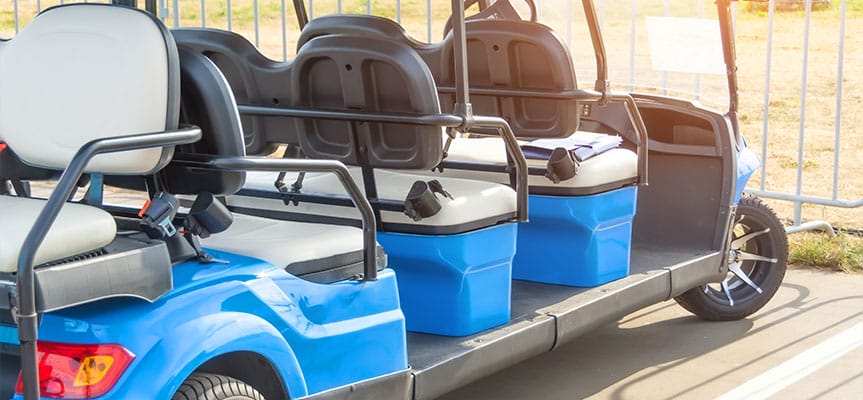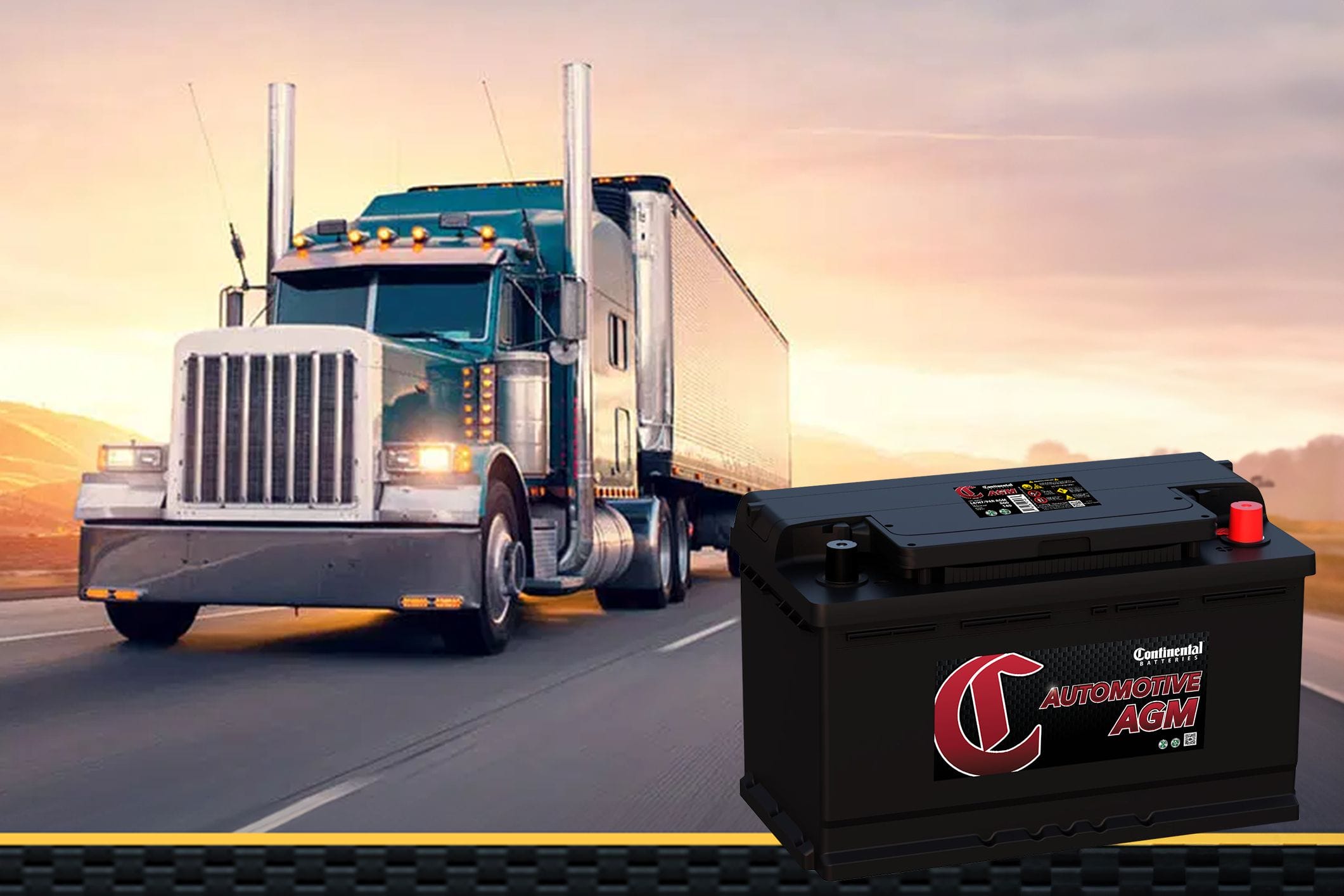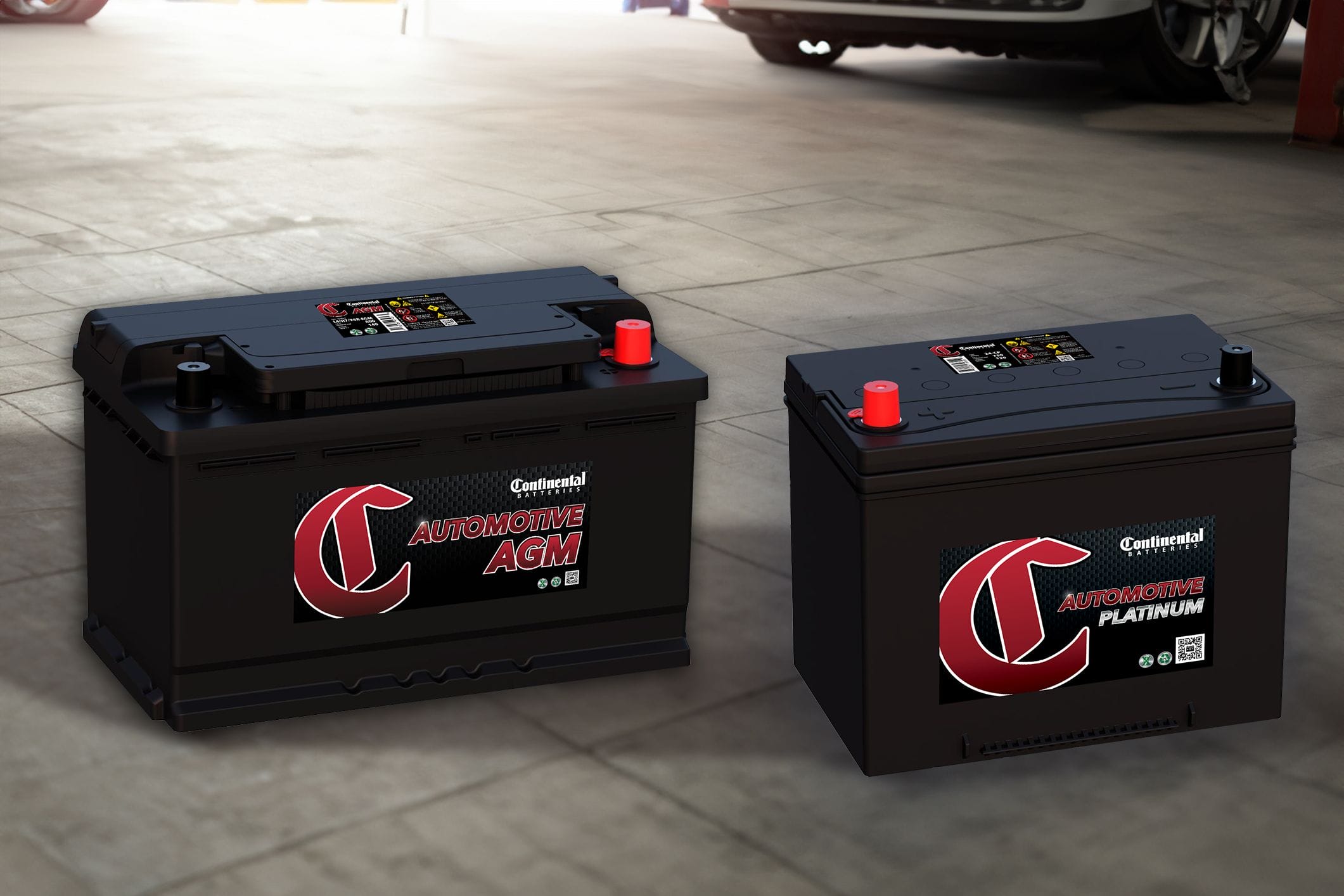
You’ve likely seen them zipping around: a small but mighty vehicle traversing airport corridors and tarmacs, luggage cart in tow. Or you may have spotted electric golf carts navigating large resorts or a tiny EV delivering food on the quiet side streets of your neighborhood.
Low-speed electric vehicles have a lot of unique uses, and they are especially attractive for personal and business use thanks to their easy maintenance, fuel cost savings and reduced emissions.
If you’re considering adding one (or more) to your fleet, follow this guide to low-speed electric vehicles, their batteries and how to care for them to prolong their lifespan.
What Are Low-Speed Electric Vehicles?
Low-speed electric vehicles (LEVs), also called neighborhood electric vehicles (NEVs), are four-wheeled vehicles weighing less than 3,000 pounds. Some are designated street legal (meaning they require licensed drivers and are typically outfitted with more safety features). They must reach a minimum of 20 mph while riding on the roadways and have a maximum speed of about 25 mph and a range of around 30 miles before recharging.
These vehicles are powered by electric batteries, meaning they don’t require fuel or release emissions. This makes them a popular choice for business, recreation and personal use.
LEVs that are street legal are allowed on roadways with a speed limit of 35 mph or less, so they must also be outfitted with many safety features found in standard vehicles, like headlights, seat belts, turn signals, brake lights, mirrors, horns, windshields and parking brakes. LEVs also require personal injury or property damage liability insurance plans in some states.
Low-Speed Electric Vehicle Uses
The LEV market is on the rise as more and more people and businesses realize the benefits of electric golf carts, personal utility vehicles, recreational vehicles and low-speed, heavy-duty equipment.
LEVs may include some types of electric golf carts, but they also differ from the usual gas-powered golf cart. Businesses, like hotels or recreational facilities, may have different kinds of LEVs to transport goods or guests or ride around for fun. They can even be used for last-mile deliveries, like food or packages, with zero emissions.
Types of Batteries Used in Low-Speed Electric Vehicles
There are a few different battery options available for powering LEVs.
Lithium-Ion
Many people are familiar with lithium-ion (Li-Ion) batteries, which are used in standard-sized electric vehicles and even many devices we use daily, like phones or computers. Li-Ions are one of the most common options for LEVs because they are efficient, hold up well to extreme temperatures and have a low self-discharge rate, meaning these batteries hold their power well even while they aren’t in use. One drawback to Li-Ion batteries is that they can be expensive upfront, but they have a long lifespan of about 10 to 20 years.
AGM
Absorbent glass mat batteries (AGM) have sponge-like fiberglass separators between lead plates that absorb the electrolyte. This means the electrolyte won’t spill, making the battery safer in LEVs. This battery type can withstand extreme weather and is better equipped than traditional batteries to handle shocks and vibrations. AGM batteries are powerful, maintenance free and come at a lower cost than Li-Ion batteries. However, they do cost more than the more traditional flooded lead-acid batteries.
Flooded Lead-Acid
When you think of car batteries, you probably imagine flooded lead-acid (FLA) batteries, the traditional vehicle battery. This battery type has a liquid electrolyte that comes into contact with lead plates. The reactions during this contact help power the vehicle. Because they are so popular and widely available, FLA batteries are some of the most affordable options for LEVs. Still, they are heavier and typically require more maintenance than other battery types.
How Long Do Electric Vehicle Batteries Last?
FLA LEV batteries last between 5 and 8 years and have a distinct power roll-off that’s noticeable before it’s time to replace them. Li-Ion batteries can last between 10 and 20 years and tend to offer consistent power until they die. For this reason, it’s helpful to have a power gauge or meter and periodically test the health of your lithium battery.
Low-Speed Electric Vehicle and Battery Maintenance
Fortunately, LEVs and other electric vehicles are easy to maintain, which is what makes having them in your fleet such an advantage. Like any vehicle, though, you’ll need to maintain proper tire pressure, inspect and repair brakes, rotate the tires and check the airbags since these are street-legal vehicles.
You can extend the lifespan of your LEV by properly caring for the battery, the powerhouse of the vehicle.
- Recharge batteries as needed. Make sure to recharge the LEV when it reaches about 20% so it doesn’t discharge completely, which can hurt the battery capacity over time. It’s best to keep these batteries charged at about 80%.
- Minimize use in extreme weather. When the heat wave comes through, or there’s a sudden cold front, use LEVs as little as possible and store them in a protected area, like a garage or warehouse. Extreme temperatures, high or low, can degrade the battery.
- Inspect the battery. Before and after a busy season, when your fleet gets a lot of use, check the batteries for any signs of corrosion, cracks, bulging or leaks. Clean or replace batteries that are corroded or damaged.
- Store batteries properly. When your customer base hits a lull in the off-season, be sure to store LEVs in an area about 40 degrees Fahrenheit to 80 degrees Fahrenheit to extend the life of the battery and protect them from the elements.
- Use battery maintainers/chargers. Having high-quality battery maintainers/chargers that automatically start and stop charging at optimal times can help ensure continued battery health during downtimes.
LEVs Can Transform Vehicle Fleets
With fuel costs on the rise, it’s wise to think ahead and convert some recreational and last-mile delivery fleets to LEVs that are easy to maintain and require less time and money spent refilling at the pump. The LEV market is expected to boom through 2026, and as battery technology advances, they’ll likely come down in costs. Knowing about LEVs, their battery types and how to maintain these vehicles can ensure your fleet is powered up and ready to ride for years to come.







